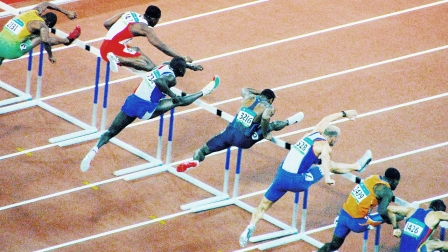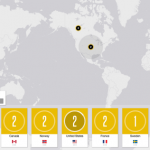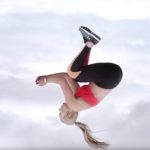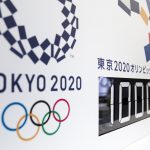Do Olympians Have Better Genes Than You And Me?
Gymnast Simone Biles’s signature move: Two backflips in the air, with straight legs, and a blind landing after an extra little half-twist.
Witnessing that gravity-defying feat, known as “the Biles,” you can’t help thinking that her level of talent is due to more than just thousands of hours of practice. Biles must have amazing genes. Clearly, there are some genetic markers for height—in Biles case, it helps to be small—but how about for factors like strength and precision?
For decades, scientists have been studying the role of nature and nurture in producing Olympic athletes like Biles. What they’ve learned is that while genes do play some role, they’re not a silver bullet. Environmental factors are extremely important: It makes a big difference if the athlete’s parents are interested in sports, and if they had access to both high-quality training and fresh food.
Scientists have pinpointed some gene variants that are associated with endurance and power, but are by no means predictive. “There is no super-athlete gene,” says Jennifer Kristin Wagner, a bioethicist at Geisinger Health System, based in Pennsylvania.
One gene that is frequently cited is the ACTN3 gene, dubbed the “speed gene,” which encodes instructions for making a specific kind of muscle protein. It’s very rare for Olympic athletes to lack the ACTN3 protein, but its importance shouldn’t be overstated, Wagner stresses.
“The speed gene comes up over and over,” she adds. “But it’s really limited as the proportion of muscle fibers is plastic and reactive to how you train.”
These limitations haven’t stopped companies from emerging that offer a way for parents and coaches to test their children for certain ACTN3 genotypes. Some test makers even provide reports that suggest a child might excel at some sports but not others.
Wagner won’t rule out all of these tests as pure snake oil, but she does harbor concerns about the potential for coercion. When minors are involved, it’s often the parents or the coaches that choose to order the test. What if parents try to push their children toward certain sports based on information that isn’t very determinative?
Another concern is that coaches start testing their athletes, and using the information to differentiate between them. One could imagine a spreadsheet of sorts with a list of athletes and their genetic information. Wagner asks: “Would this be for the athlete’s benefit or for discriminatory reasons?”
Understanding Injury Risk
Some scientists have chosen to focus instead on leveraging genetics to better understand injury risk. For a young person starting out in sports, that could make or break a career. In the run-up to the 2016 Olympics in Rio, reports are already surfacing that some of the world’s most successful athletes won’t be able to compete on account of broken bones.
Stanford University’s Stuart Kim says he has been intrigued by this area since 2008, when he embarked on a study using 23andMe’s data to spot genetic differences between “super big super strong people, and normal people.” Long story short, he didn’t find much. But he did get to know many athletes, who told him about how they were desperate to avoid getting hurt.
Kim now studies potential genetic markers that suggest a higher risk of a specific sports injury. “The idea is to find DNA markers that can tell athletes what sorts of injuries they might have,” he says. That includes things like stress fractures, Achilles tendon ruptures, and rotator cuff injuries.
For an Olympian, this knowledge might be less actionable (at that level, they might have a better sense for their limitations and propensity for certain kinds of injuries). But for those at the early stages of their career, Kim hopes this information could be used to personalize training regimens.
He is currently working with elite fitness coach Liz Letchford on a venture that would leverage genetic information collected via 23andMe to understand sports injuries. That initiative is still in the beta phase, but they are working with serious fitness junkies, including those competing in triathlons. Letchford and Kim are currently tracking about 330 DNA markers.
Kim is also working with the elite Stanford and UCLA cross-country teams, in which about 30% to 60% of the runners get stress fractures every year. The winning strategy at Stanford, Kim explains, is to run the athletes 80 miles a week or more and about two-thirds will get injured and the rest will not. Those that remain unhurt are optimal to submit for the championship.
Kim says that the information is kept anonymous, so the athletes won’t know. He’ll suggest training regimens, and keep track of the runners to see any differences in outcomes.
“We think there are better ways that training everyone the same way,” he says.
Fast Company , Read Full Story
(28)













